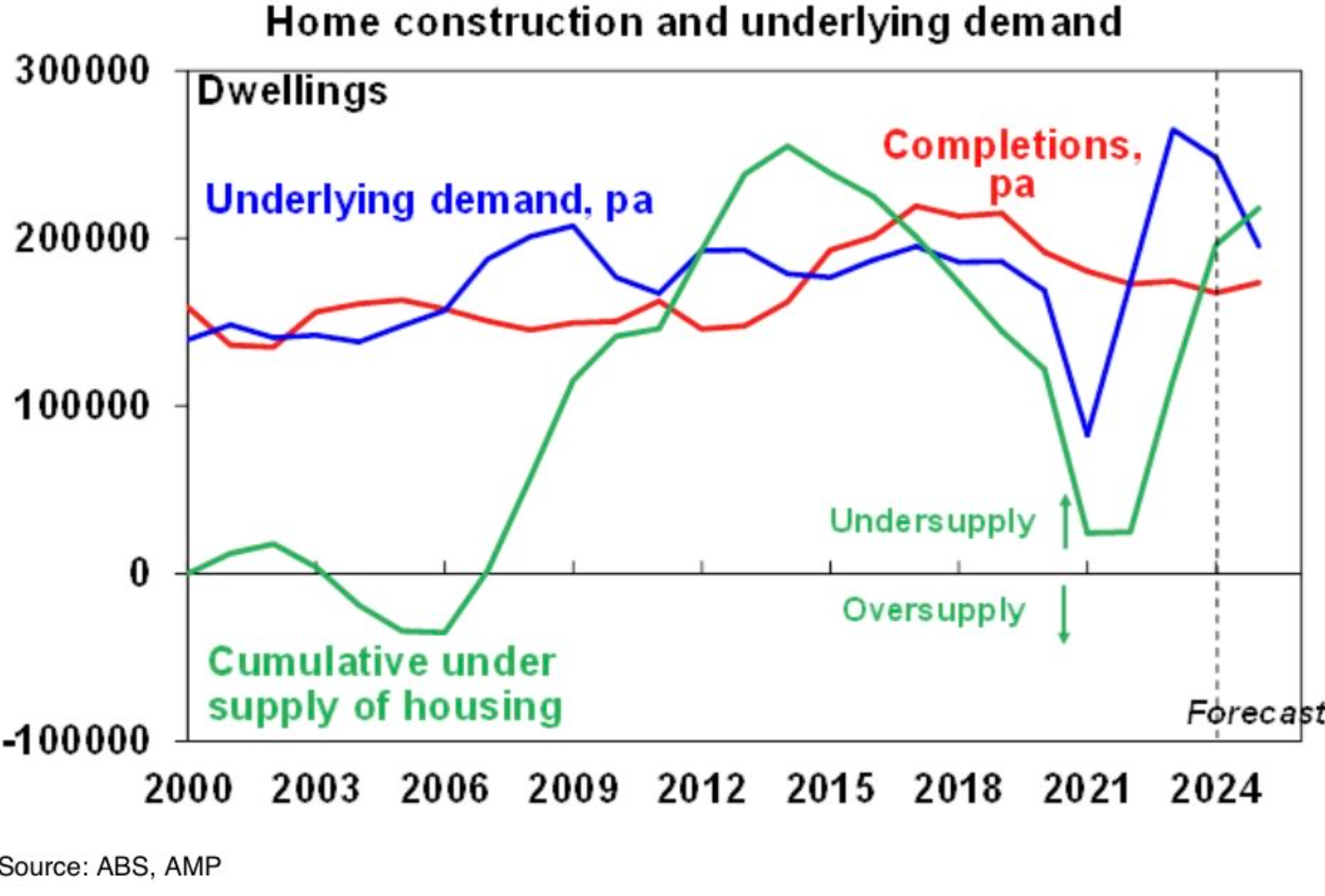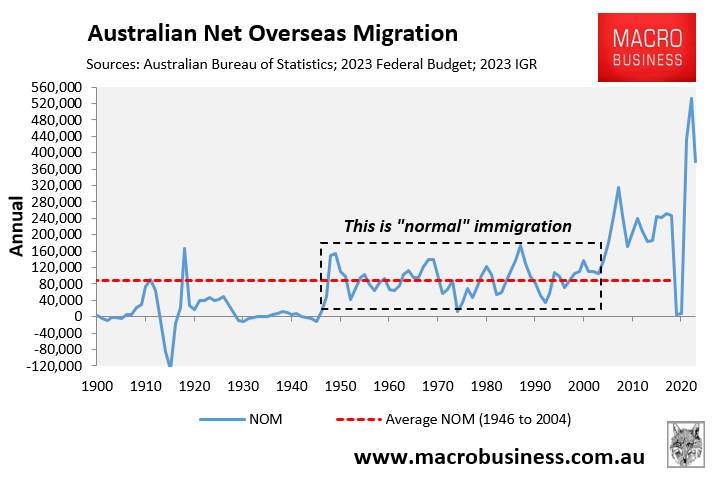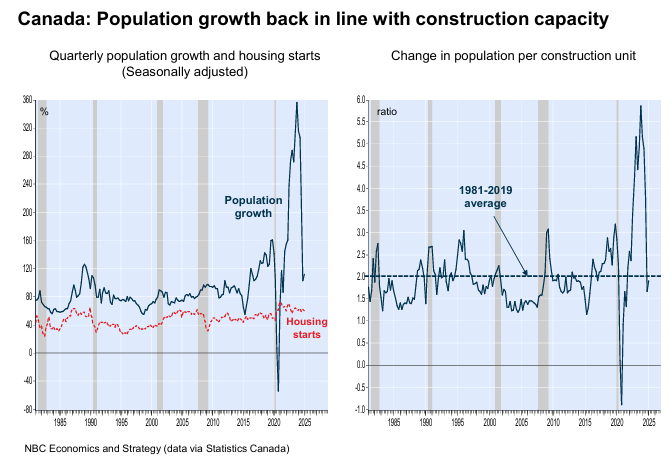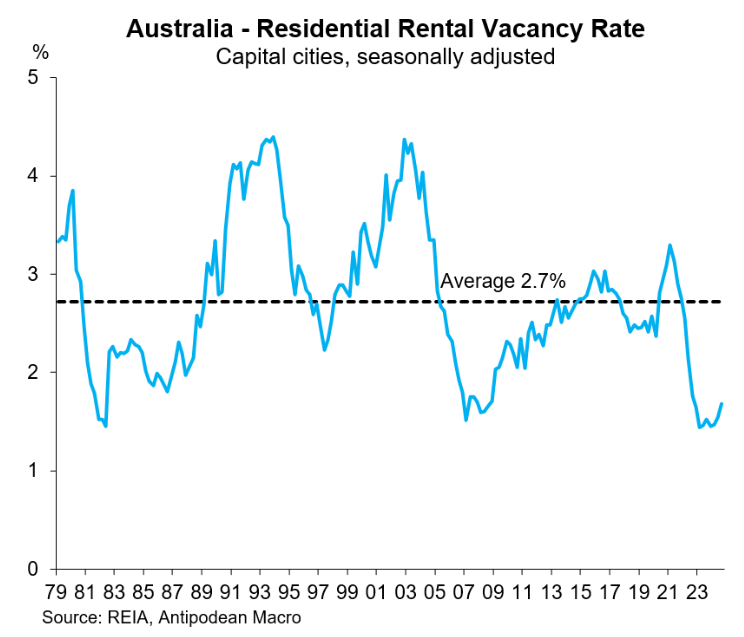In June 2024, AMP chief economist Shane Oliver posted the following chart showing that Australia’s housing shortage was about to surpass 200,000 dwellings:

Oliver explained via Twitter (X) that “underlying demographic demand (driven by strong population growth) continues to run well ahead of new housing supply (constrained by capacity and cost issues, etc.), and is pushing the accumulated housing shortfall back up towards levels last seen prior to the unit building boom last decade”.
As seen above, Australia’s housing supply was largely in balance up to the mid-2000s. Then the federal government more than doubled net overseas migration, which pushed population demand ahead of supply.

The boom in high-rise apartments from 2015 to 2020 gradually reduced the shortage until the pandemic turned net overseas migration negative, nearly eliminating it.
However, the record post-pandemic immigration boom drove the housing shortage back up. And according to Oliver, the housing shortage is now approaching 300,000 homes:
Dr Shane Oliver, chief economist and head of investment strategy at AMP, insists tying immigration to housing capacity is “just a statement of the obvious”…
Starting from when annual net overseas migration spiked in the second half of the 2000s — without a corresponding increase in home building — Australia has built up a chronic shortage of housing that gets bigger every year…
AMP estimates the current shortfall is between 200,000 to 300,000 dwellings.
“Basically if you get [net overseas migration] back to about 200,000, and allowing for population growth and demolitions, you’re probably needing to build about 180,000 dwellings in that situation anyway,” he said.
If immigration is cut back to 200,000 and 240,000 homes per year are built, “over five years I reckon we probably would have gotten on top of the housing shortage”.
“After that point then we should calibrate the level of immigration to the capacity of the home building industry to supply homes,” he said.
After increasing net overseas migration to unprecedented levels, Canada experienced a similar housing shortage. These factors too drove rental vacancies to record lows and rental inflation to all-time highs.

The difference is that Canada’s government last year implemented a three-year population/immigration freeze, which aims to maintain Canada’s population at its current level of 41.6 million.

As a result, the number of temporary migrants in Canada declined in Q4 2024.
This immigration “freeze” has brought Canadian housing construction back into line with population growth, eroding Canada’s housing shortage.

Accordingly, Canadian asking rents have fallen for six straight months.

The Australian government should simply emulate Canada’s immigration freeze.
Alternatively, it should tie the rate of immigration to a level that ensures a residential rental vacancy rate above 3%.

Regardless, persisting with Big Australia immigration will result in the housing crisis continuing.

